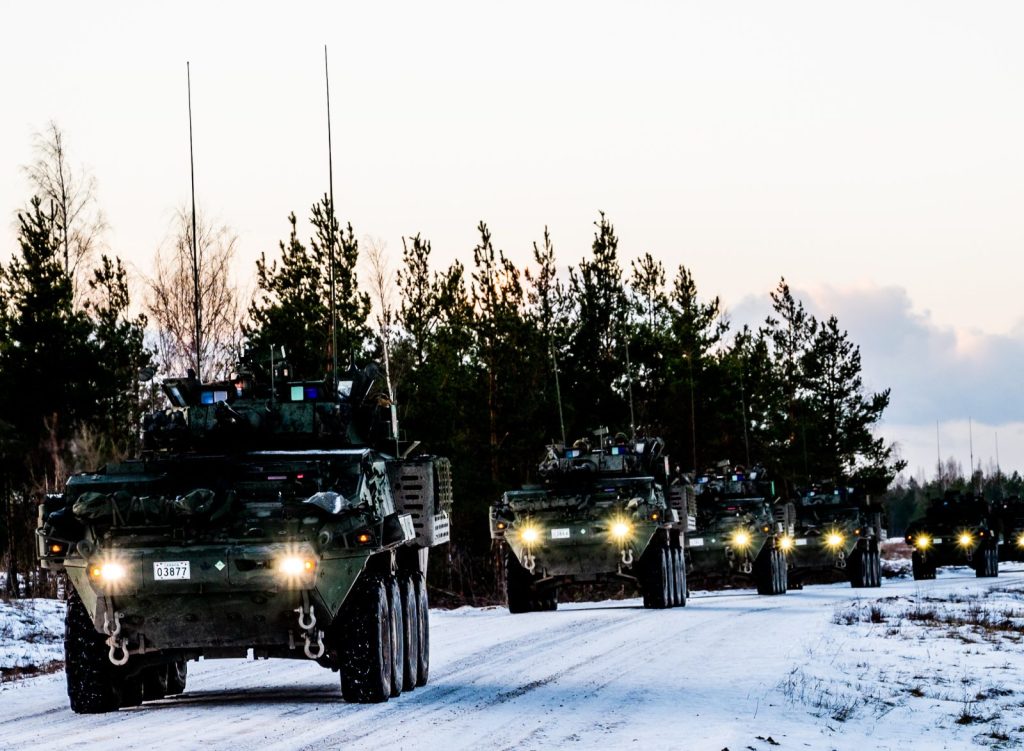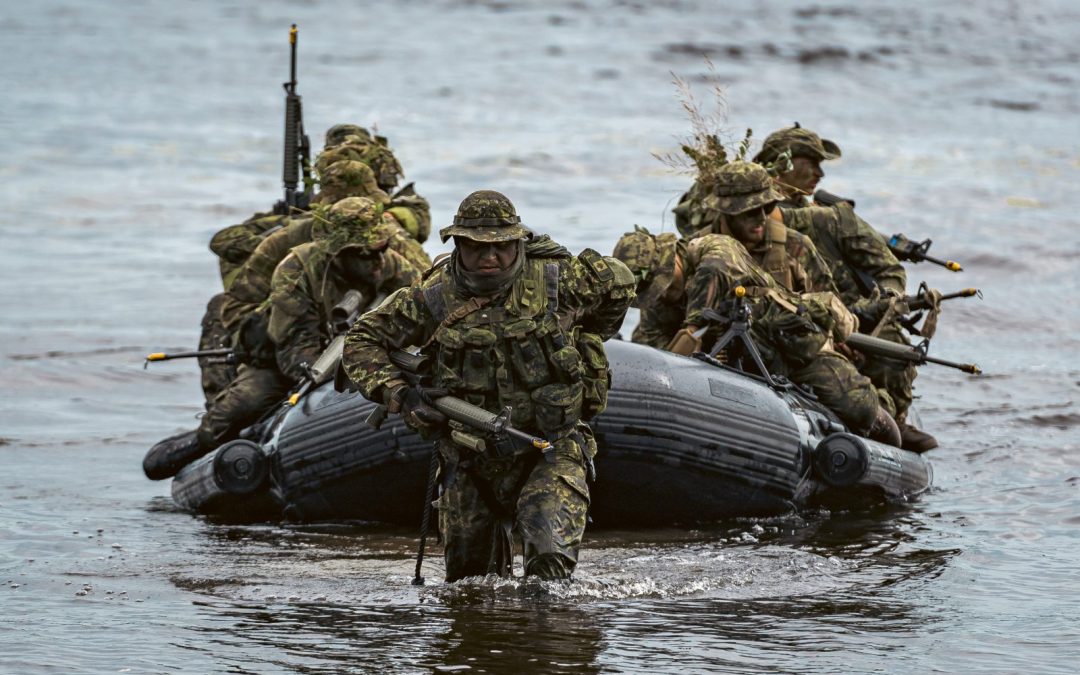by Chris Thatcher
Shortly after OpenAI released ChatGPT last November, millions of people began interacting with the artificial intelligence-enabled chatbot, testing its abilities and fretting about its possibilities.
For the military, it was a reminder of how quickly emerging technology can explode and then transform, as early adopters push its limits and companies then further innovate based on the feedback.
To capitalize on that type of a feedback loop, the Canadian Army needs a new and better way to engage with the defence sector, one that allows for the complexities of a competitive — and, at times, contentious — procurement process, while still providing the mutual flexibility to experiment with — and, hopefully, refine — proprietary equipment, systems and services.
The broad details of the Army’s core programs are laid out in the 2017 defence policy, the 2019 modernization strategy and in the 2022 digital strategy, to name a few. While the current sample of industry outlooks, conferences and trade shows helps the Army share some of the finer points of its capability acquisition projects, they are just one piece of what could be a far richer and more beneficial partnership, especially at a time when NATO governments are urging their defence sectors to surge capacity.
“I hear loud and clear from industry that that’s not sufficient, that there isn’t enough interaction at a level where we can help drive innovation,” Colonel Dave MacIntyre, Director of Land Requirements (DLR), said in a recent interview. “The resources that industry is putting into their own innovation are not being either well nuanced or harnessed by what’s possible from an Army perspective.”
Last fall, during the Best Defence Conference in London, Ont., MacIntyre acknowledged as much to a room of industry executives and called for a better way to collaborate and innovate.
The Army might be on a digital transformation, but the networks and tools that will facilitate that, especially at the tactical edge, are evolving at a pace beyond traditional procurement.
“We see the innovation that industry is able to do with a rather quick turnaround,” he said, “and [current and prospective suppliers] perceive ways to update their capabilities or their offer for certain programs within the Army.”

Members of 34 Canadian Brigade Group on Exercise Xerus Endurci on Ste-Thérèse Island near Montreal in October 2022. Photo: MCpl Dominic Duchesne-Beaulieu
MacIntyre, an armour officer with the Lord Strathcona’s Horse (Royal Canadians), is mindful of the defence policy aim of bridging the divide between “lead-up innovation and new procurement.” He suggested a need for more “innovation opportunities” between the early phases of procurement, when the Army begins to identify gaps in a particular capability and analyze possible options, and the later phases, when requirements are defined and industry proposals are sought.
“There’s still some challenge in that space,” he said. “But there are quite a few streams that I’m not confident we are exploiting to their maximum potential.”
The Army could be doing more through the sandboxes, contests, and competitive projects of the Defence R&D Canada (DRDC)-led Innovation for Defence Excellence and Security (IDEaS) program, which provides opportunities to observe and guide industry innovation in controlled scenarios, he said. And DLR could expand its use of buying and trying small quantities of equipment for field tests to truly understand how soldiers will use it.
“All of those programs have soldiers at their heart,” said MacIntyre, who served in DLR on multiple occasions between 2005 and 2020, and assumed the director’s title in August 2022.
“When DRDC procures unmanned ground systems for a trial, it’s our soldiers who then use those systems in realistic roles and exercises, and that informs both the development of that technology and, also, the projects that follow.”
But for the hard problems of developing and effectively employing emerging technologies, especially at the tactical edge, more industry engagement is needed, he acknowledged.
One option MacIntyre raised is an Army-sponsored force development forum. Backed by a capability roadmap for certain technology themes, it could allow the military to lay out specific challenges and provide a space for industry to demonstrate solutions. It might also allow the Army to guide some industry investments. That in turn could be connected to DRDC experimentation, which could then transition to a “physical buy and try of equipment” to gather soldier input for a statement of requirements, he mused.
“The challenge in that case is about downstream contracting and procurement. That’s not my department, of course, [but we] need to ensure that from a competitive process standpoint, no one is being excluded from the ability to provide solutions to the Army.”
Another option already underway is collaborative experimentation between the field force and industry. Last fall, 2 Canadian Mechanized Brigade Group Headquarters and Signal Squadron (2 CMBG HQ & Sig Sqn) conducted a trial with as many as 10 companies, some sustaining the current Land Command Support System, that demonstrated several network solutions developed by industry partners.
“The innovative solutions that came from the field force, enabled by industry in the field at the tactical edge with us, was remarkable,” MacIntyre said.
Soldiers and industry representatives “iterated software development” several times over two weeks, and came up with novel ways to engineer durable networks for a dispersed command post, writing and rewriting code on the fly.
“That’s an example of a very quick turnaround, of us using those partnerships and existing contracting mechanisms to be able to get support very close to the tactical edge,” he said. “All involved indicated that this is the way we need to be partnered in the future.”
It’s also an important signal for industry. The Army’s new digital strategy recognizes the disruptive effect Everything as a Service could have on the “current capability acquisition paradigm.” Trials of this type will be critical for building trust in industry-delivered services like networks and radios at the tactical edge.
Field units exercise to build warfighting skills, not for the sake of conducting experiments, MacIntyre noted, “so there’s a limit to how much experimentation we can accept on these exercises.” But the 2 CMBG HQ & Sig Sqn trial is “the first of many.”
There’s an obvious value to putting new equipment and technology in the hands of soldiers well before it’s acquired, something the Army hasn’t exploited enough, he acknowledged. “[They] will use it in ways that you wouldn’t necessarily expect. That’s not a negative. It allows them to develop how they’re going to use that piece of equipment in the modern battlespace.”

Canadian LAVs during Ex Wolverine Forge in Latvia in February 2023. Photo: Sgt 1st Class Christian Milano, Spanish Army
The Army purchased a small quantity of light tactical vehicles through a buy-and-try to better understand the options for light forces mobility. Experiments by the Army’s three light battalions have significantly altered the statement of requirements that will soon go out to industry. Defining requirements without the benefit of that soldier input “is probably a failing on our part,” said MacIntyre, who deployed to Bosnia, twice to Afghanistan, and domestically on Operation Podium for the 2010 Olympic Games.
“I think you’ll see much more of that small, low-level experimentation to inform the development of future capabilities.”
One of the challenges, though, could be funding, something industry will be looking for if it is to put significant resources and time into experiments that are not directly tied to an equipment tender. DLR has an envelope for minor capital projects valued up to $10 million, “[which] allows me to procure small projects that will solve small problems for the Army,” MacIntyre noted, “but we’re quickly seeing that at the current authority levels, that amount of money perhaps is becoming less able to meet gaps in requirements.”
Continuous experimentation will also become a regular feature of the Army’s “continuous capability sustainment,” a new approach to maintaining systems and vehicles. Yearly tech refreshes might be routine for commercial technology like cellphones, but enhancing networks and software will require some adaptation, especially if trials with field units are required to confirm an upgrade before it’s implemented. The money issue, however, will be more easily addressed once a contract is in place.
MacIntyre pointed to Royal Canadian Air Force aircraft fleets that have undergone substantial technological change over their service life as examples of how technology can be spiralled into a platform.
“I think the Army can harness some of those lessons and start to use this continuous capability sustainment concept in managing more agile technology cycles,” he said. “That includes an increased partnership with the [manufacturer] responsible for long-term sustainment and innovations.”
Fortunately, iterations of technological development do not need to be fully developed and universally applied across the Army, in every mechanized brigade group or every specialized unit, to be considered ready for initial operating capability. Equipment can be acquired in smaller quantities and scaled up as it is brought into service and tested on operations.
As part of the digital strategy, the Army commander has indicated a willingness to accept asymmetry, “whereby certain capabilities are in certain brigades and certain divisions, and then by the time they are fielded to subsequent division, they have changed with new software or hardware,” said MacIntyre. “We really see [that] as the only way for us to get more agile in fielding new hi-tech capability.”
If his call for a better way to collaborate and innovate is answered, rather than silence between when a project is launched and a request for information is released, defence companies should see more engagement and possibly greater input into the final statement of requirements.

